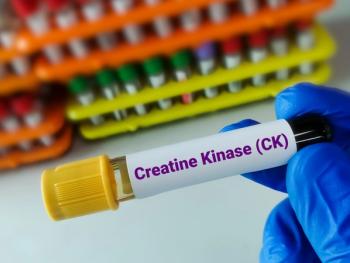
Newly Discovered Muscle-Inflammation Mechanism Could Yield DMD Treatment Option
Repurposing existing therapies may help slow muscle weakness in patients with Duchenne muscular dystrophy, a new study suggests.
Newly discovered mechanisms associated with chronic muscle inflammation in Duchenne muscular dystrophy (DMD) could point the way to new therapeutic options to slow progressive muscle weakness in patients. If validated in future studies, the findings suggest that currently available therapies might be repurposed to help preserve muscle function in patients with the disease.
DMD is marked by progressive muscle degeneration and weakness, eventually leading to loss of ambulation. The new research examines the role of chronic muscle inflammation in the disease’s progression.
“Muscle pathology in DMD patients and animal models is featured by chronic inflammation and progressive scar formation,” explained Lan Zhou, M.D., the neurologist-in-chief at the Hospital for Special Surgery, in New York. “The majority of the inflammatory cells are macrophages, mostly derived from blood inflammatory monocytes.”
Zhou and colleagues previously looked at the therapeutic potential of blocking monocyte recruitment from the blood circulation. They found that it led to a temporary decrease in macrophage accumulation and scarring, which in turn led to benefits in muscle function. However, the benefits were transient in nature, suggesting that macrophage inhibition alone is insufficient to control muscle inflammation.
In the new study,
Zhou and colleagues found that fibro/adipogenic progenitors (FAPs) in muscle tissue produce colony-stimulating factor-1 (CSF-1), which in turn stimulates the proliferation and accumulation of resident macrophages in skeletal muscles. The results show that CSF-1 — and ultimately FAPs — play an important role in chronic inflammation and DMD disease progression.
Zhou said her study suggests that it may be important to target both macrophages and FAPs in order to control chronic muscle inflammation. Doing so could be an important step in slowing down the loss of muscle function in DMD, she said.
Zhou cautioned that this line of therapy will not cure DMD itself but rather address a key symptom of the disease. She said a breakthrough for DMD will likely come through gene therapies, given the genetic nature of the disease. Cell therapies are also being explored, she noted.
“We hope [targeting macrophages and FAPs] will slow the disease progression and also improve the muscle tissue environment to enhance gene and cell therapy efficiency,” Zhou said.
She said addressing muscle inflammation could ultimately help improve outcomes from gene or cell therapy by preserving muscle health.
“If muscle has significant damage, inflammation, and fibrosis, the efficiency of gene and cell engraftment would be compromised and low,” she said. “Controlling inflammation and fibrosis is felt to be necessary, short-term or long-term.”
One reason the new research by Zhou and colleagues is important is because it suggests that already-existing therapies might be repurposed to help slow down DMD. That’s because the mechanisms they identified are already targeted by two existing therapies, one that suppresses macrophage infiltration and one that inhibits CSF-1.
Zhou said a next step for her and her colleagues is to study the safety and efficacy of combining those two existing therapies as a treatment for patients with DMD. She said potential side effects will need to be carefully addressed. However, if that research proves successful, she said it could mean a faster pathway for the existing therapies to be used as a DMD therapy.
“Testing and using already-existing medications can speed up translation of the findings,” she said.
Newsletter
Get the latest industry news, event updates, and more from Managed healthcare Executive.






















































